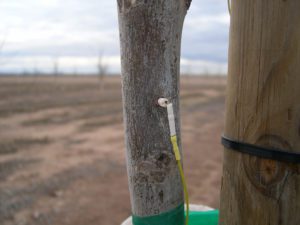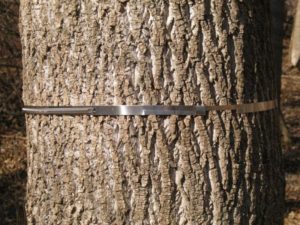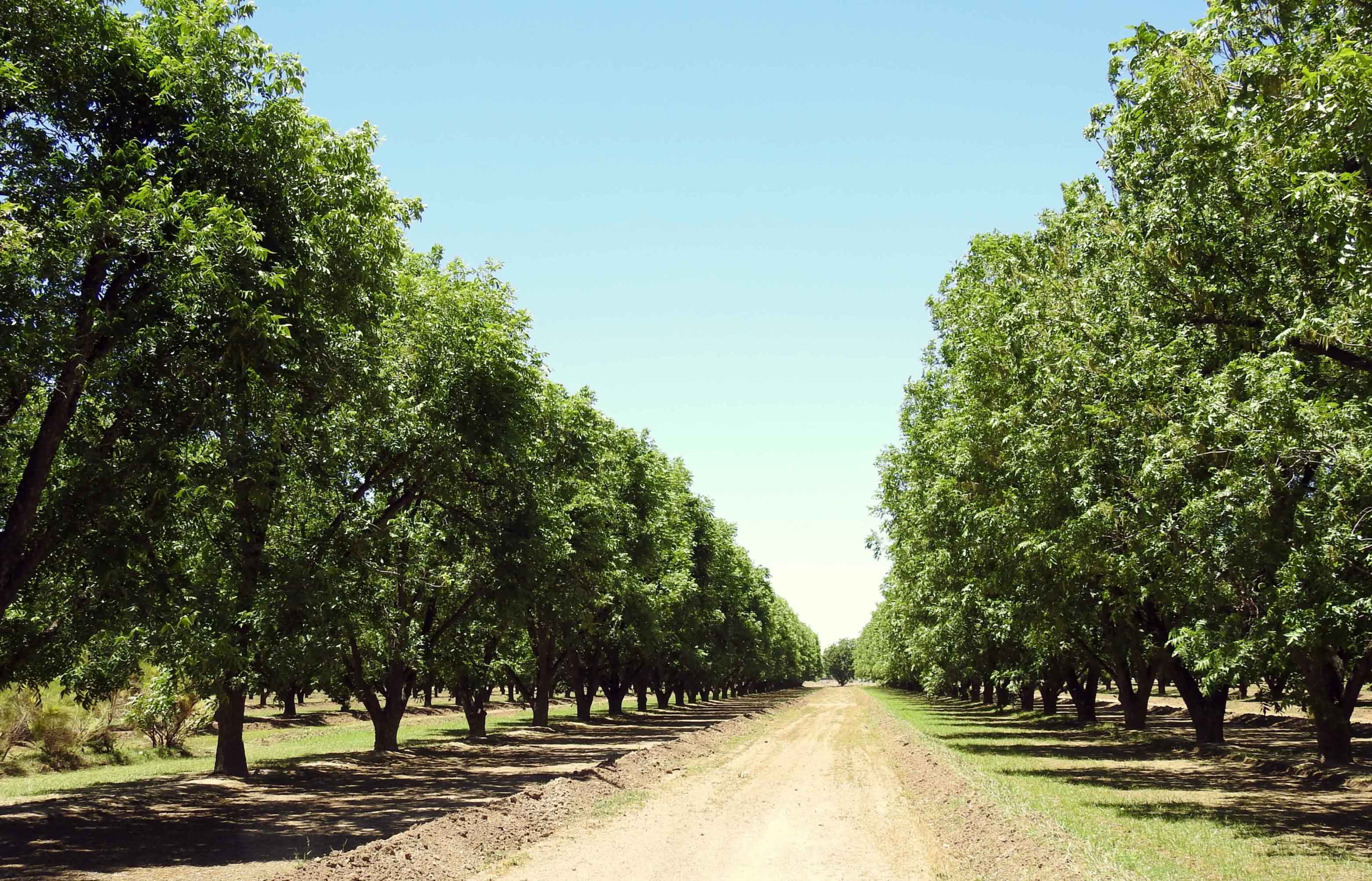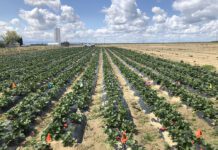This month’s Ag Tech topic came about because a reader wrote us with a request for information. He wanted to know about the use of dendrometrics in water conservation. We’re very glad he asked, as it sent us down a road that has been very interesting. What’s more important is, we found a new water and nutrient monitoring method that could save growers money.
With recently developed electronic measuring techniques, a high-tech equivalent of the old-fashioned dendrometer is becoming an important tool for hi-tech tree and vine growers. It’s helping them deliver water and nutrients only when the plant needs them. This can provide a potential savings in water and fertilizers. It is a demand-based water and nutrient management system based upon careful measuring of plant fluids.
Dendrometers have been used to evaluate the health of orchards and forests for years. They are metal bands that encircle the tree’s trunk and measure changes in the circumference. These changes happen not only when the tree grows; water flowing from the roots to the branches will also cause the trunk to swell. This measurement can help an astute grower determine peak water demand. It will tell him whether that demand is being met, before the tree suffers from dehydration.

Phytogram sensor in a young pecan tree in a new orchard.
An electronic version of a dendrometer can be inserted into the sapwood of the tree to measure the flow of water. These sensors can also determine what nutrients are being carried with the water. Developing this precision electronic sensing and measuring system has been the lifelong work of William Gensler of Tucson, Arizona. Gensler is a professor emeritus at Arizona State University and the president of Agriculture Electronics Corporation. That’s the company he founded to market his Phytogram system as well as the manual and automatic dendrometers that his company manufactures. His Phytogram system is the result of 25 years of research and development.

Dendrometer band on tulip popular tree, photo courtesy Smithsonian Environmental Research Center’s Global Tree Growth Project.
“The whole idea is, give the plants water only when the plants want water, and give the plants nutrients only when the plants want nutrients,” Gensler said. Such precise management is now possible with the real-time monitoring provided by electronic sensors. “The phytogram monitors the water flow in real time, as well as the nutrients, and nitrate levels. The grower knows instantly what is happening inside his trees.”
His Phytogram is a comprehensive unit of 15 sensors, hard-wired to a central unit, which transmits the data by cellular or wired connection to the internet. In a typical installation, sensors are needle-like metal rods that are inserted into the sapwood of the main trunk. Usually one sensor is used per tree. However, some growers place a second sensor in a petiole to gain early warning of dry conditions. With either sensor, the grower is able get the readings instantly. They are transmitted from inside the plant to the central pod then transmitted to the grower’s internet connection, on a continuous basis.
Gensler pointed out that the Phytogram works without any labor output. No one has to go read the Pods or a dendrometer. The data is obtained via telemetry and travels straight from the tree to the grower’s computer. The fluid flow and nutrient data is instantaneous and continuously updated, so it is very timely as well.
He further explained that the system is able to identify nitrates in the fluid, as well as potassium. This is possible because the nutrients inside the plant are ions. “By counting the ions in the extracellular fluid and identifying the type of ions,” Gensler said, “we determine the timing and magnitude of ions present in the vicinity of the surface.”
This allows two methods of identification.
“The first method uses the speed of movement of the ion as an identifying characteristic. Nitrate ions move faster than potassium ions under the same electric force field,” he said. “By measuring the speed of the movement of the ion from the surface to the bulk and in the opposite direction one can identify the ion.”
The second method of identification is more technical, and calls upon sophisticated electric engineering, according to Gensler. “An electrical potential is applied which differs from the measured quiescent potential of the surface for a brief period of time. This causes a reconfiguration of the ions adsorbed on the surface such that cations move from the surface to the bulk and anions move from the bulk to the surface. The relative speed of the movement of the anions and cations is different,” he explains, and this allows the type of nutrient present to be identified.
The bottom line:
Measuring liquid and nutrient flow inside the tree in real time could allow a grower to save money by changing how much they irrigate and fertilize. Here is how: at present, growers supply water and nutrients at set intervals. Their goal is to provide what they expect the trees will need. This is something of a guessing game, and growers tend to provide more than is needed to insure they meet the tree’s needs. If a grower is monitoring the water and nutrient levels inside the tree, he knows how much the tree will use – it’s no longer a guessing game, he has hard facts to work with. He need only supply the amounts that the tree will take up and put to good use. When the tree has all it can handle, the application can be stopped. This is a demand-oriented system that should reduce irrigation and fertilization costs.
For more information about the Phytogram system, contact William Gensler at 520-624-7656 or visit his website at www.phytogram.com.
Editor’s note: We are always pleased to hear from our readers with requests for information or review of high-technology farming equipment and apps. We’d like to know more about your needs and interests in this field. Let us hear from you. Feel to send us an email at len@lenwilcox.com with suggestions of Ag Apps or Ag technology to review.
















